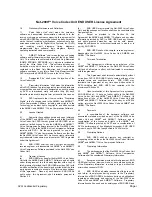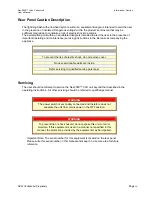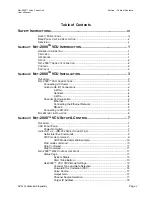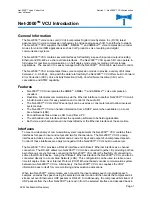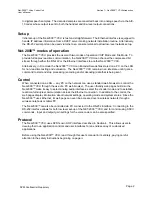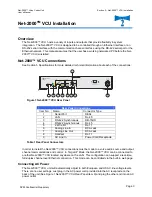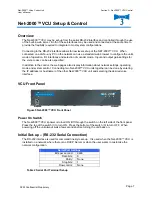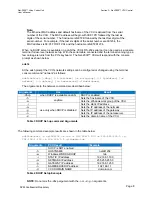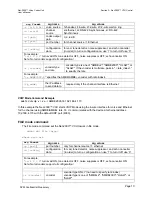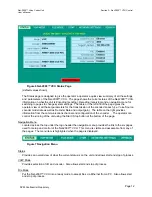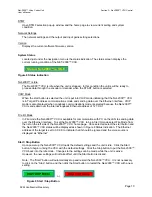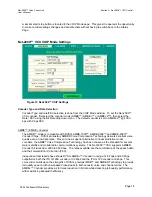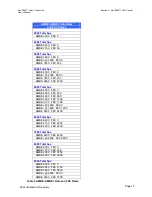
Net-2000™ Voice Codec Unit
User’s Manual
Page 4
DVSI Confidential Proprietary
Section 2 – Net-2000™ VCU Installation
Voice Audio I/O Connections
4-Wire
Connecting the Net-2000™ VCU to analog audio components is fairly self explanatory. A typical
connection would be to connect the audio output of an audio component such as a Mic, a Digital
Tape, player or even a PC sound card output to the Analog Input jack of the Net-2000™ VCU (audio
cables not included). Next connect the Analog Output jack of the Net-2000™ VCU to an amplifier or
Audio In jack on a PC sound card.
Handset
If the handset connection is to be used instead of the 4-wire interface, connect the standard
telephone handset that was included with the unit to connect to the RJ11 handset connector. This
handset has a cord (also included) that is about a foot long (when not stretched) to help reduce noise
from being introduced into the voice signal.
2-Wire
The Net-2000™ VCU can be connected to a standard North American POTS line through its 2-wire
interface. The 2-wire interface is designed to pick-up the line and be ready to accept analog voice to
be encoded and sent across the designated channel. With the wait on ring feature the Net-2000™
VCU will automatically answer the line when it receives a call instead of having to keep the line open
all the time.
Channel Communication
Ethernet
The Net-2000™ VCU implements this channel data interface using a special protocol designed by
DVSI. This UDP streaming mode allows for full-duplex communication to another Net-2000™ VCU
box in real time. To run in this mode the operator selects the voice interface (4-Wire, handset, or 2-
Wire) and the Ethernet communications channel interface. When running in VOIP Mode the VCU
encodes a frame of speech from the specified voice interface and implements a protocol to stream a
packet containing a decode command and encoded data to the communications channel interface.
At the same time the VCU expects to receive packets from the communications channel interface that
contains a decode command and encoded data. The VCU decodes and sends this continuous
stream to both the handset and line-out speech outputs.
In File Mode the Net-2000™- P25 VCU responds to incoming voice packets by encoding the voice
data in them and transmitting a channel data packet to the sender, and to incoming channel data
packets by decoding them and transmitting synthesized voice data packets to the sender. Only one
user can access the VCU at a time in File Mode. Transmitting data packets to the VCU from more
than one source will produce undesired results.
Connecting the Ethernet Network
Make sure the Ethernet cable is connected to the Ethernet port in the back of the NET-2000™ VCU
before applying AC power. Note that if you are going to use a direct Ethernet connection from your
PC to the NET-2000™ VCU you should use a crossover cable. If your NET-2000™ VCU is
connected to a hub, a straight-through Ethernet cable should be used.
The VCU has a 10 Mbps Ethernet interface for network communication. It can operate on a 100
Mbps LAN when connected to a 10/100 Ethernet hub or router. The default network configuration for
the VCU assumes that a DHCP server is available on the LAN to provide it with valid network
address information. If a DHCP server is not available on the LAN, static IP address information will
need to be entered via the serial port in order to access the VCU over the network.



